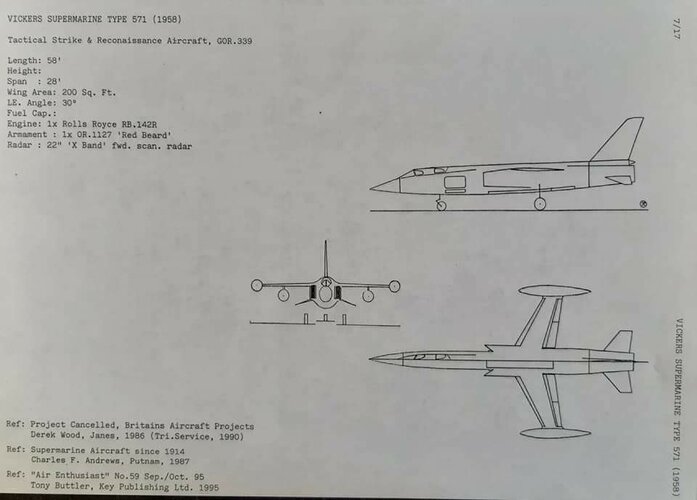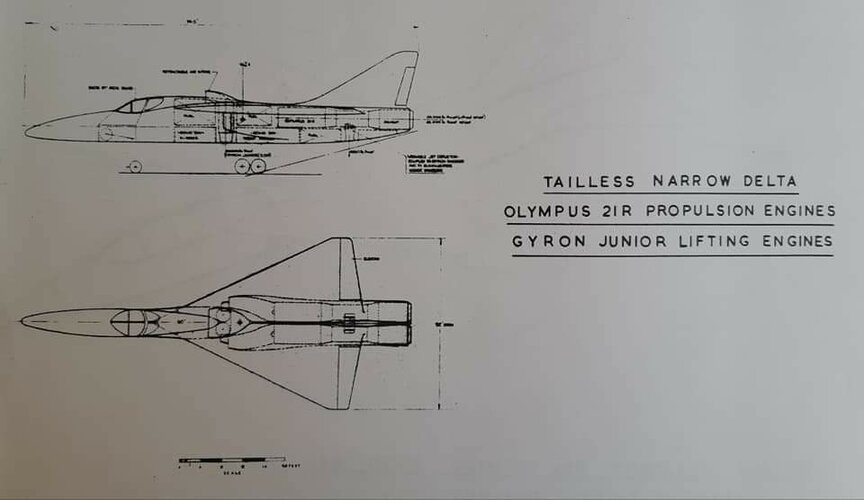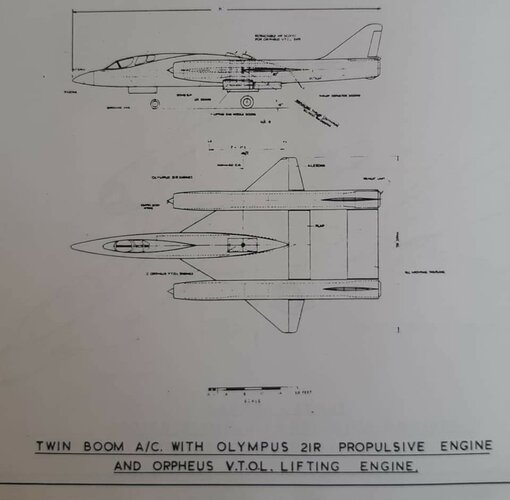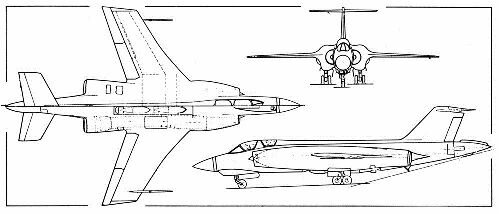Basically, the combat aircraft that is reminiscent in size, weight and abilities to the F-105. Engine of choice: Bristol Olympus, of the type earmarked to the TSR.2. Time of development: starts by the time TSR.2 is cancelled.
Any takers?
So, Hawker P.1121 then.
The first challenge is the range requirement. The original TSR2 range requirement was 1000nmi, the prototypes were built for a 750nmi range. F-105 actually has a 675nmi range, so an engine with ~10-15% less TSFC would get you to 750nmi. But the Olympus isn't that engine, it's even thirstier than the J75! Olympus TSFC is 0.817, J75 is 0.74.
You'd need an engine with a TSFC of about 0.64 to get the range you'd need out of an F-105, and we didn't see afterburning engines with that kind of TSFC until the F101. But you could also mess around with the airframe and add 10-15% more internal fuel and have much the same effect on range. Does make the plane bigger, but if your engine makers can't get you the TSFC you need, you build a bigger airframe.
The second challenge is the avionics. Terrain Following Radar, computerized bombing system, Inertial Navigation System, maybe even a star tracker. All of those were really at the ragged edge of what you could make fit into a plane in the 1950s.
Range and avionics combined is what made the TSR2 so huge in practice.
Also, a side note about bombload: The F-105 only carried one nuke in the weapons bay, the TSR2 was supposed to carry two nukes.




